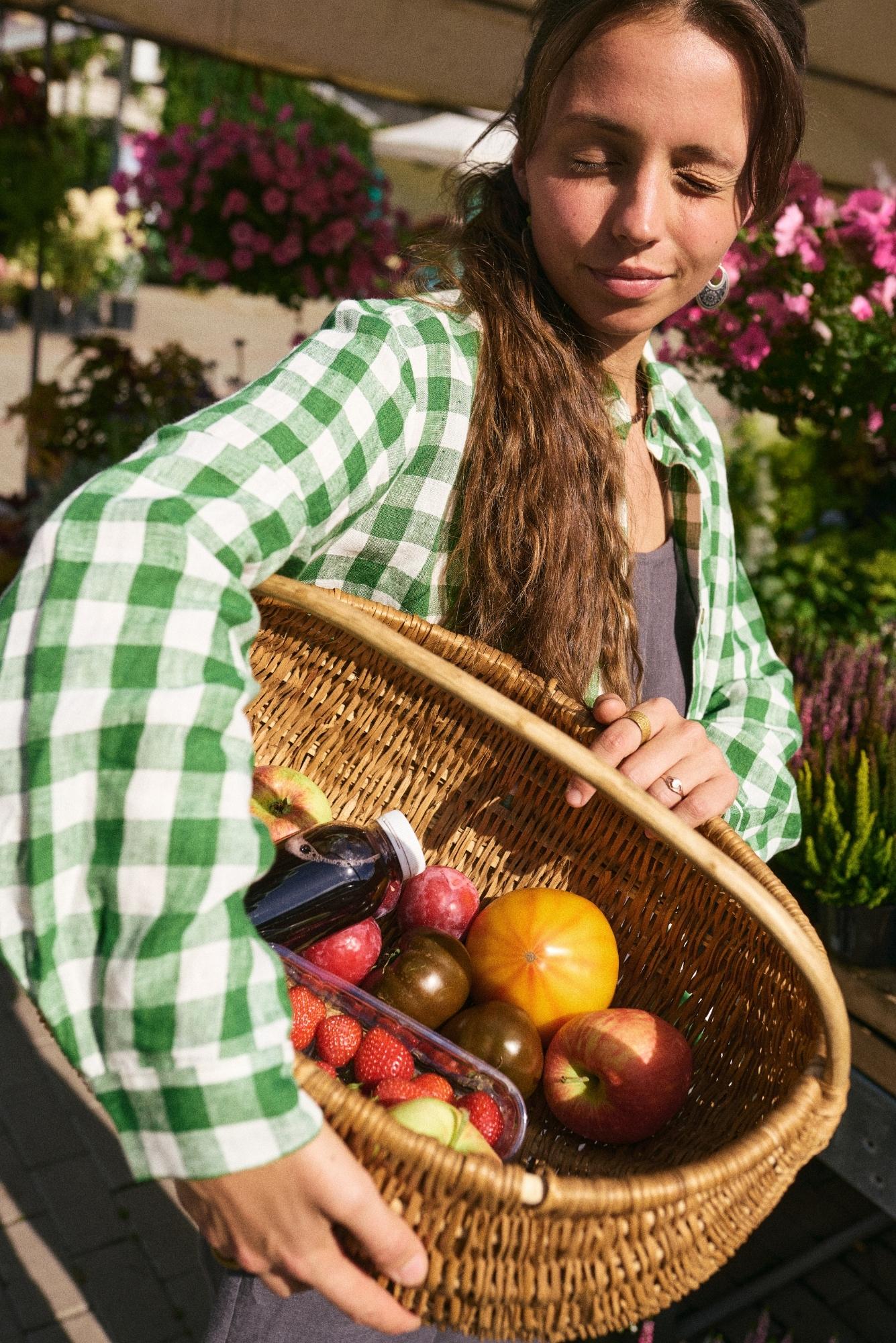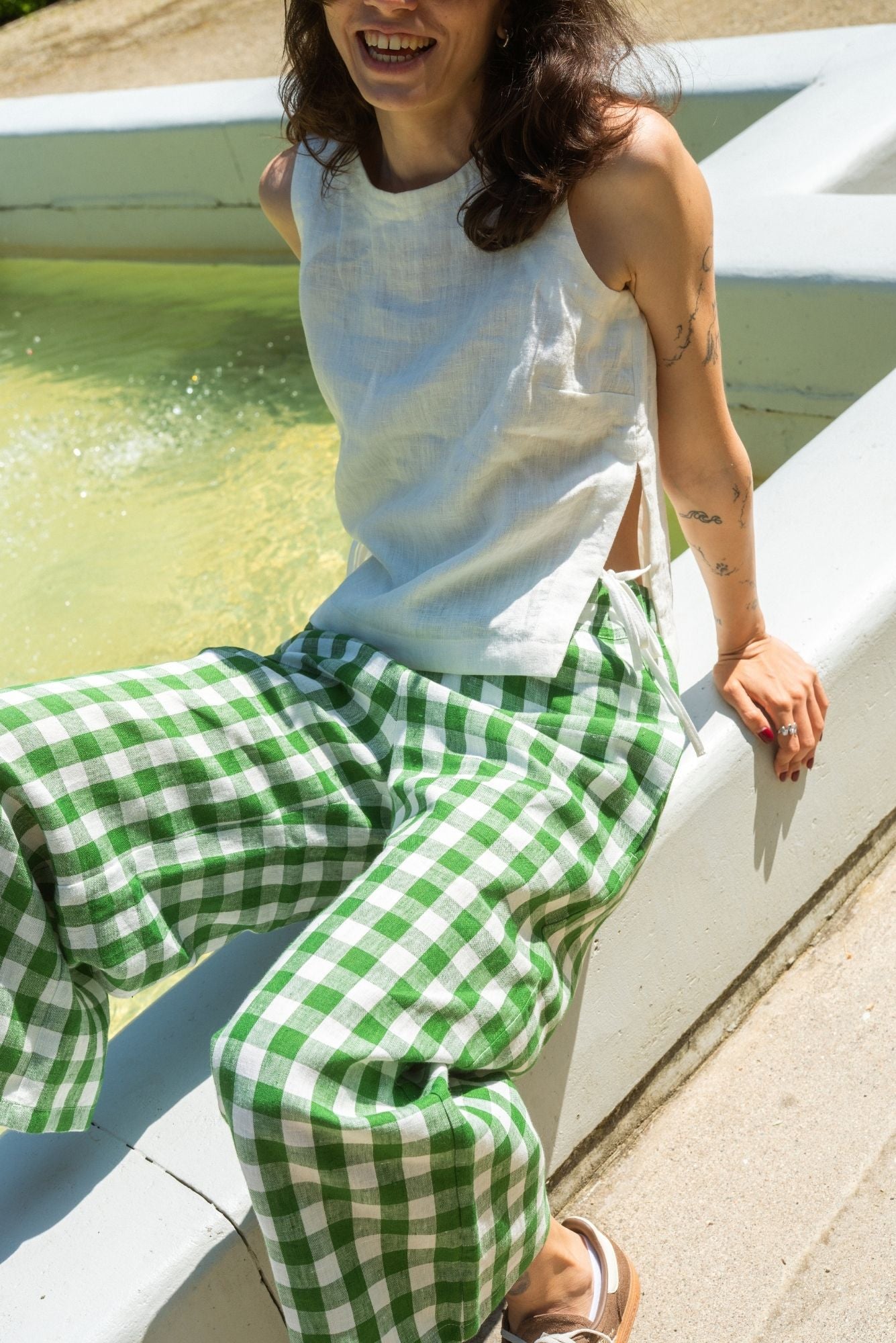Akvilė - On Wild Plants, Slow Living, and Linen
There are people who move with nature as though it were a second heartbeat. Akvilė is one of them. A cook, forager, and slow-living advocate, she creates food that is not only nourishment, but a dialogue between the earth and our daily plates. We visited her kitchen - lined with jars of herbs, linen cloths folded neatly on shelves, and the scent of bread fresh from the oven - to talk about wild plants, sustainability, and the quiet rituals that shape her life.

Cooking with the Wild
What first drew you to cooking with wild edible plants - and what keeps you there?
“Constant communication and collaboration with nature eventually leads to the most beautiful embodiment of that relationship: creativity. For me, it comes alive in food - in the dishes I make every day, in a loaf of bread wrapped in linen, in flavors that remind us how deeply we belong to the land.”
Defining Slow Living
How do you define slow living in a world that moves fast?
“For me, it’s a feeling that there is enough. A sense of trust that this very moment is exactly as it should be. When creativity and action arise, they come not from fear or tension, but from an inner abundance, from a place of resource and calm.”
A Seasonal Calendar of Wild Plants
Which wild ingredients sing in spring, summer, autumn, winter?
Autumn: roots, mushrooms, and berries at their peak.
Winter: twigs, bark, and the rare frost-proof berries.
Spring: the first blossoms and tender greens pushing through the soil.
Summer: a season of endless gathering - meadows, forests, marshes all overflowing with edible gifts.
“These rhythms echo our inner nature too. Autumn draws us inward, winter teaches us resilience, spring renews us with strength, and summer opens us outward into the world.”

Foraging with Care
Three safety rules every beginner forager should know:
Only pick and eat plants you can confidently identify.
When trying less familiar plants, start with very small amounts and observe how your body reacts.
Follow the rule of thirds: leave two-thirds for nature, take at most one-third - ideally, only as much as you know you’ll truly use.
Linen as Daily Ritual
Where does linen show up in your day, and why does it work for you?
“Nearly 80% of my wardrobe is linen now. I sleep in linen bedding, my kitchen is full of linen cloths and towels. As life slows, I pay more attention to details - not only what I put into my body, but also what I place on it, what I sleep in, what I touch daily. Linen is more than fabric; it’s a journey from seed to cloth, carrying history, tradition, and values I resonate with. The most important moments of my life - which are the everyday ones - are wrapped in folds of linen.”

Beyond Materials: What Sustainable Clothing Means
“Sustainability in my wardrobe isn’t just about the fabric - it’s about comfort, freedom, and authenticity. A sustainable garment lets me feel completely myself. I don’t worry about how I look; I trust the fabric that accompanies me, moving through the world with me. A sustainable piece is alive.”
The Soundtrack of the Kitchen
“Some days, the soundtrack is silence - just the sounds of herbs being stripped, vegetables chopped, birds outside the window. Other days, I cook to the loudest rhythms, swaying my hips, singing along. Each plant seems to draw out its own song from me.”
If One Meal Could Tell My Story
“Bread, without question. In the making of bread, everything important to me comes together: patience, care, truth, trust, simplicity, community. Bread carries all the elements - air, fire, earth, water. It is the body of the earth, held in human hands. Bread shows what can be born from the co-creation of people and nature.”
A Simple Herbal Drink Recipe
Akvilė shares a refreshing, naturally fermented herbal lemonade:
- Fill a glass bottle with herbs (yarrow, mint, nettle, blossoms) and optional berries or citrus slices.
- Dissolve two large spoons of honey in warm water, then pour over the herbs.
- Top the bottle with spring water.
- Leave at room temperature for 1 - 3 days (longer for a light fizz).
- Once the taste feels right, enjoy immediately or refrigerate.

Final Thought
In Akvilė's world, nature is not just a source of ingredients - it is teacher, collaborator, and mirror. Cooking, foraging, and even the choice of fabric are ways of deepening this bond. With every loaf of bread, every herbal drink, every linen fold, she reminds us: slow living isn’t about delay, it’s about depth.
Discover: Laukiniška
Discover more: Linen women's clothing




Leave a comment
This site is protected by hCaptcha and the hCaptcha Privacy Policy and Terms of Service apply.